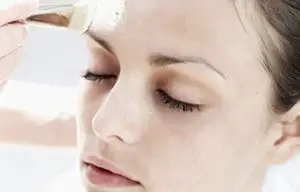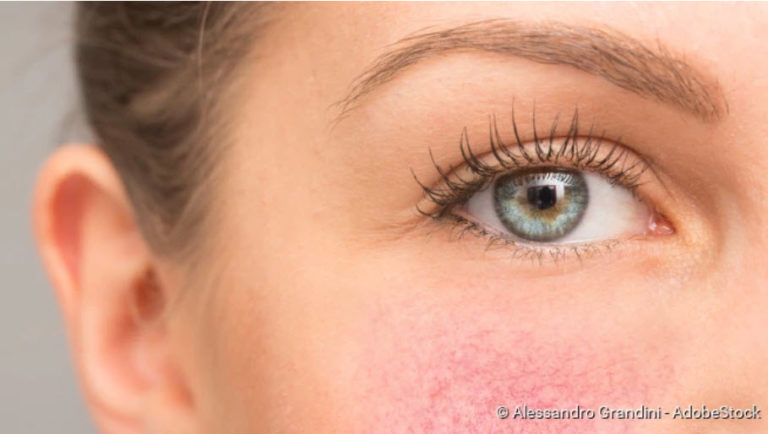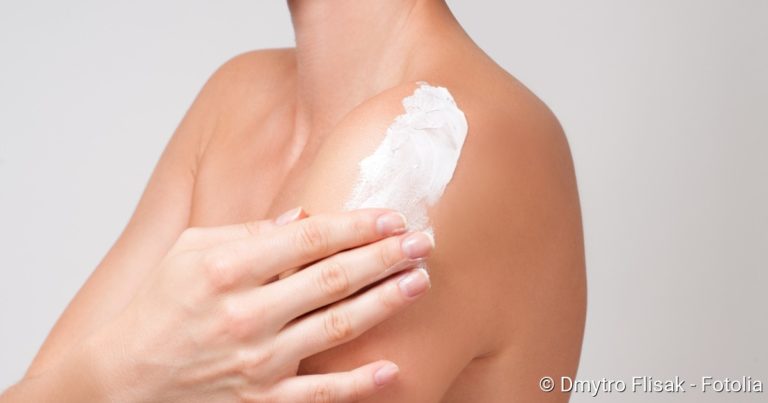Facial Skin Protection From The Sun
Facial Skin Protection From The Sun

The face, hands and décolleté (low neckline) are the parts of the body that are most frequently exposed to UV rays. Although the sun, enjoyed in the right amount, can have a positive effect on mood, vitamin D formation, blood circulation, metabolism and performance, excessive exposure to the sun is very harmful. Skin damage caused by light includes premature skin aging, hyperpigmentation and even skin cancer. The facial skin should therefore be protected throughout the year with specially designed products.
Various factors influence whether or not sunlight-induced damage occurs. Age, skin type and other circumstances can influence the risk of sunlight-induced skin damage.
- AgeThe incidence of melanoma increases steadily with each age group, with 55-64 year-olds being affected three times as often as 25-34 year-olds.
- Skin typeChildren and people with very fair skin, red or light blond hair and many freckles are especially sensitive to light. More information about the skin types.
- MedicationSome drugs, such as acne therapies, birth control pills and antibiotics, can increase sensitivity to light.
- GeneticsStudies have shown that some people have a genetic predisposition to herpes blisters that can be triggered by UVA radiation.
- After a dermatological treatmentchemical peelings or laser treatments can increase light sensitivity.


Signs of light-induced damage to the facial skin
Unprotected and prolonged exposure to UVA and UVB radiation can cause short- and long-term damage, leading to premature skin aging, suppression of the immune system and even skin cancer. And this does not only apply on vacation. UV radiation, especially UVA radiation, hits the earth all day long, every day, in winter and summer, on cloudy and sunny days. Sun protection for the face should therefore be just as much a part of daily skin care as cleansing milk, facial toner and moisturising care, for example against ageing or pigmentation disorders.
The facial skin differs from the rest of the body in a few points:
- It is thinner,
- the cells are smaller,
- it has more pores,
- and secretes more lipids due to the high number of sebaceous glands.
- It is also exposed to the environment on a daily basis and is therefore more vulnerable to external factors such as wind, cold, smoke, air pollution and, of course, UVA and UVB rays. Read more about the structure of the skin.
While the skin on the body is usually covered by clothing, the skin is exposed to these external factors throughout the year. Therefore, it should be protected from the sun with products that are specially designed to meet individual requirements. More information about the effect of the sun on the body skin.

The facial skin can be affected by UV radiation in different ways. The consequences can range from premature skin aging to skin cancer. The skin of the face requires special attention because it is different from the skin on the rest of the body. The skin on the face is exposed to wind and weather more often and more strongly than on the rest of the body.

Therefore, one should know the signs and symptoms of the most common skin types:
Premature skin aging
UV radiation is undoubtedly one of the main causes of premature skin aging. The symptoms are wrinkles, loss of elasticity, age spots and rough skin.
Polymorphic light dermatosis (PLD)
As little as 20 minutes of high sun intensity can be enough to trigger the PLD. This is an allergic rash that appears after exposure to the sun and can take on various forms: small red spots, larger reddened areas and blisters.
Hyperpigmentation
This is a stressful skin condition in which dark spots appear on the skin. The cause is mainly an excessive exposure to sunlight.
Sunburn
Excessive exposure to the sun and insufficient protection causes the skin to become red and sore. Although the whole body is at risk, sunburn usually occurs in the areas that come into direct contact with the harmful UV rays: Shoulders, face, the upper edge of the ears, bald head, back of the feet.
UV radiation is one of the main causes of premature skin aging. The face is one of the parts of the body where sunburn occurs most frequently.
![]()
If you are worried about your skin, you should definitely consult a dermatologist.

Causes and triggers
Keep the danger of UV radiation to a minimum
Although the list of light-related skin damage and diseases is long, there is also good news, as many can be avoided:
- Avoid direct sun, especially between 11 and 15 o’clock when the sun’s rays are strongest.
- During daily skin care, apply sunscreen to the uncovered areas of the body and face.
- Even on cloudy days do not forget to use sun protection.
- Babies and infants should not be in direct sunlight.
- Protect your eyes by wearing sunglasses with UVA and UVB filters.
- Pay attention to the needs of each skin type.
- Protect the skin with clothing, and the head and face with a hat with a wide brim.
- Consider the possible side effects of medications prescribed by your doctor.
- The risk can be minimized by daily skin care with SPF.
Sun protection is important and must not be ignored. Despite warnings of health risks from excessive exposure to the sun, the number of cases of skin cancer, melanoma and other forms, has increased in recent decades. It is important for a protected stay in the sun to know the risks and to behave accordingly so that the skin is not endangered at any time – shade, clothing and the right sun protection products.
Care recommendations
Prevention or regeneration of sunlight-induced damage
Damage caused by sunlight can be extremely hazardous to health, so prevention is essential.
Creams and lotions for protection and prevention
As facial skin is sensitive and exposed to UV rays all year round, it is recommended to apply sunscreen every day as part of your daily skin care routine:
- Skin care should be tailored to the individual skin type in order to achieve the optimal result.
- Apply the sunscreen generously before going outside.
- Avoid contact with the eyes.
- Apply cream repeatedly (every 2 hours), especially after swimming, sweating or drying off. If the product is not applied frequently enough, the protective effect is reduced.
- Avoid contact with textiles to prevent stains.
Products that have been specially formulated for the different skin types.
-
For combination skin up to acne-prone skin
- Look for products with a light texture and make sure they are “non-comedogenic” (i.e. they do not contain ingredients that could clog pores and cause impurities). In addition to effective sun protection, Eucerin Oil Control Face Sun Gel-Cream SPF 30 or 50+ offers a sebum-regulating Oil Control technology with L-carnitine, which helps to improve the condition of the skin. The ultra-light gel cream leaves a matting and long-lasting (up to 8h) anti-shine effect.
-
Against premature skin aging
-
The sun is responsible for 90% of premature skin ageing (see source 2). All Eucerin Sun facial products protect the skin from photoageing – but if your skin shows signs of premature aging, try Eucerin Photoaging Control Face Sun Fluid SPF 50+ or SPF 30, the formula contains short and long chain hyaluronic acid to smooth wrinkles and visibly reduce the signs of aging. If you prefer a tinted product, try Eucerin Photoaging Control Face CC Cream tinted SPF 50+ light or medium. The color pigments it contains give an immediate even complexion.
2 Ramos-e-Silva et al, ‘Anti-aging cosmetics: Facts and controversies’. Clin Dermatol. 2013 Nov-Dec; 31(6): 750-8 ”
-
Against hyperpigmentation
- The sun is the main cause of sunspots (also called age spots) and an important trigger for hyperpigmentation such as post-inflammatory hyperpigmentation. Eucerin Pigment Control Sun Fluid SPF 50+ was especially developed to prevent sun-related hyperpigmentation. In addition to excellent sun protection, the formula contains the unique and patented ingredient thiamidol, which is directly at the root of hyperpigmentation. It is clinically proven to reduce dark spots and prevent their recurrence. You can read more in our article Sun and hyperpigmentation.
-
For dry, very dry and atopic skin
- Neurodermatitis skin is very sensitive and needs sun protection that is suitable for these special needs. Eucerin Sensitive Protect Sun Face Sun Fluid SPF 30 or SPF 50+ gives dry and atopic skin the soothing protection it needs.
-
For skin prone to sun allergies
- Although they also occur elsewhere in the body, many people suffer more frequently from polymorphic light dermatosis (PLD) on the face. Eucerin Allergy Protect Sun Creme-Gel SPF 25 or 50 contains alpha-glucosylrutin, which helps to prevent sun-related allergies and can be used on the face as well as on the body. Read more about symptoms and causes of PLD.
In addition to sun creams or fluids, it is also important to protect the skin of the face with a wide brimmed hat or parasol. And:


- Drink plenty of water so that body and skin do not dry out. Sufficient drinking and a healthy diet are essential for healthy skin.
- Protect the eyes from UV radiation by wearing sunglasses with appropriate filters.
- A hat with a wide brim is one way to reduce UV exposure.
- To consume foods that have been shown to promote sun protection. The consumption of red, yellow and orange fruits and vegetables, which are rich in carotenoids, strengthens the skin’s own defenses after some time. A similar effect has been achieved with a diet rich in omega fatty acids (olive oil, fatty fish), vitamin C, vitamin E and flavonoids, with little dairy products and red meat.





